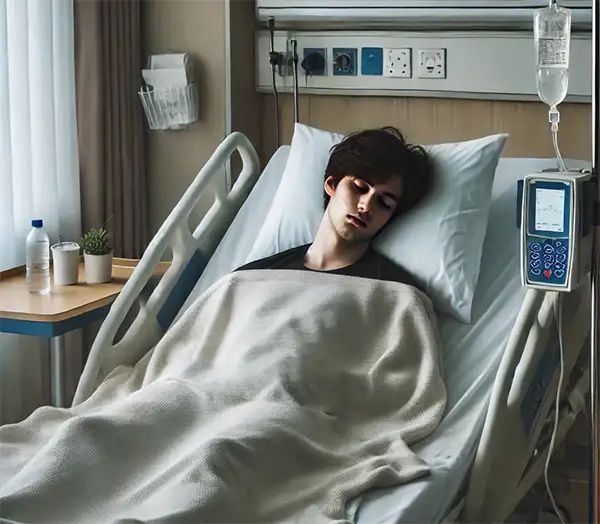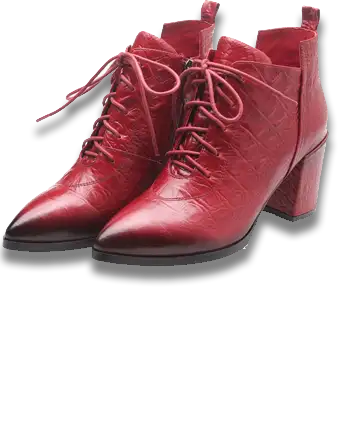A Day to Remember and Raise Awareness
International Red Shoe Day, observed annually on July 25th, is a poignant and significant day dedicated to honoring those who have lost their lives to Lyme disease and other invisible illnesses. This day also serves as a platform to raise awareness about these often misunderstood and misdiagnosed conditions. Let's dive into the origins, significance, and ways to participate in this meaningful observance.
Origins of International Red Shoe Day
International Red Shoe Day was established in memory of the late Australian Lyme disease patient, Theda Myint. Theda was a vibrant and passionate individual who battled Lyme disease and its co-infections for many years before her untimely passing. Known for her love of red shoes, Theda's footwear became a symbol of her vibrant personality and enduring spirit. In her honor, Lyme disease advocates and patients worldwide don red shoes to remember Theda and all those who have struggled with invisible illnesses.
 Red shoes are more than just a fashion statement; they are a symbol of solidarity, resilience, and hope. The color red represents strength and determination, qualities that are essential for those battling chronic illnesses. By wearing red shoes, participants show their support for patients and survivors, raising awareness about the challenges they face daily. This simple yet powerful gesture helps bring visibility to conditions that are often overlooked or misunderstood.
Red shoes are more than just a fashion statement; they are a symbol of solidarity, resilience, and hope. The color red represents strength and determination, qualities that are essential for those battling chronic illnesses. By wearing red shoes, participants show their support for patients and survivors, raising awareness about the challenges they face daily. This simple yet powerful gesture helps bring visibility to conditions that are often overlooked or misunderstood.
Lyme Disease and Invisible Illnesses
Lyme disease, caused by the bacterium Borrelia burgdorferi, is transmitted through the bite of infected black-legged ticks. Symptoms can range from mild to severe and may include fever, fatigue, joint pain, and neurological problems. If left untreated, Lyme disease can lead to chronic health issues, significantly impacting the quality of life.
Invisible illnesses like Lyme disease are particularly challenging because their symptoms are not always visible to others. This often leads to skepticism, misdiagnosis, and a lack of understanding from both the medical community and the public. International Red Shoe Day aims to change this narrative by educating people about these conditions and advocating for better research, treatment, and support.
Ways to Participate in International Red Shoe Day
- Wear Red Shoes: The simplest way to participate is by wearing red shoes on July 25th. Share photos on social media using the hashtag #RedShoeDay to spread awareness.
- Host an Event: Organize a local event or virtual gathering to educate others about Lyme disease and invisible illnesses. This could be a walk, a seminar, or a community meet-up.
- Share Personal Stories: If you or someone you know has been affected by an invisible illness, share your story to help others understand the impact of these conditions.
- Donate to Research: Support organizations dedicated to researching Lyme disease and other invisible illnesses. Your contribution can help fund vital research and provide resources for patients.
- Advocate for Change: Use your voice to advocate for better healthcare policies, more comprehensive research, and increased funding for invisible illnesses.
Educational Initiatives
Educational initiatives play a vital role in transforming the understanding and treatment of Lyme disease and other invisible illnesses. By fostering awareness and providing accurate information, these initiatives help to dismantle misconceptions and promote empathy and support for those affected. Here are several ways educational efforts can make a significant impact:
Schools and Universities: Educational institutions are prime venues for raising awareness about invisible illnesses. Incorporating information about Lyme disease and other chronic conditions into health and science curricula can educate students from a young age. Guest lectures by medical professionals and advocates can provide firsthand insights and encourage a deeper understanding. Schools can also host awareness days where students and staff wear red shoes and participate in activities that highlight the challenges faced by those with invisible illnesses.
Workplace Training: Employers can play a crucial role in educating their workforce about invisible illnesses. Providing training sessions on recognizing the symptoms and understanding the needs of colleagues with chronic conditions can foster a more inclusive and supportive work environment. Employers can also implement policies that accommodate the unique challenges faced by these employees, such as flexible working hours and remote work options.
Community Outreach Programs: Community centers and local organizations can host workshops and seminars that provide valuable information about Lyme disease and other invisible illnesses. These programs can be tailored to various audiences, including caregivers, healthcare providers, and the general public. By partnering with medical professionals and advocacy groups, these initiatives can offer up-to-date information on prevention, diagnosis, and treatment options.
Online Educational Resources: The internet provides a vast platform for disseminating information about invisible illnesses. Creating comprehensive websites, informative blogs, and engaging social media content can reach a broad audience. These online resources can include patient stories, expert interviews, and interactive tools that help individuals learn about the symptoms, challenges, and management of chronic conditions. Online courses and webinars can also provide in-depth education for those seeking more detailed knowledge.
 Healthcare Provider Training: Improving the education of healthcare providers is crucial in the fight against invisible illnesses. Medical schools and continuing education programs can include comprehensive training on the diagnosis and treatment of conditions like Lyme disease. Workshops and conferences dedicated to these topics can keep healthcare professionals informed about the latest research and best practices. Enhancing the understanding of these conditions within the medical community can lead to better patient outcomes and more compassionate care.
Healthcare Provider Training: Improving the education of healthcare providers is crucial in the fight against invisible illnesses. Medical schools and continuing education programs can include comprehensive training on the diagnosis and treatment of conditions like Lyme disease. Workshops and conferences dedicated to these topics can keep healthcare professionals informed about the latest research and best practices. Enhancing the understanding of these conditions within the medical community can lead to better patient outcomes and more compassionate care.
Public Awareness Campaigns: National and local public awareness campaigns can help bring the challenges of invisible illnesses into the spotlight. These campaigns can include posters, flyers, and public service announcements that highlight the importance of recognizing and supporting those affected. By partnering with media outlets, these campaigns can reach a wide audience and encourage a societal shift towards greater empathy and understanding.
Collaborative Efforts: Collaboration between various stakeholders, including healthcare providers, educational institutions, advocacy groups, and government agencies, can amplify the impact of educational initiatives. Joint efforts can lead to the development of comprehensive strategies and resources that address the multifaceted challenges of invisible illnesses. These collaborations can also ensure that accurate and consistent information is disseminated across different platforms and communities.
Support Groups and Peer Education: Support groups provide a space for individuals with invisible illnesses to share their experiences and learn from one another. These groups can offer peer-led educational sessions where participants discuss coping strategies, treatment options, and ways to navigate daily life. By fostering a sense of community and mutual support, these groups can empower individuals and reduce the isolation often associated with chronic conditions.
Educational Events: Hosting educational events such as health fairs, symposiums, and community talks can provide valuable information and resources to a broad audience. These events can feature expert speakers, interactive exhibits, and informational booths that cover various aspects of Lyme disease and other invisible illnesses. By making these events accessible and engaging, organizers can reach a diverse group of attendees and promote widespread awareness.
Educational initiatives are essential in the ongoing effort to raise awareness about Lyme disease and invisible illnesses. By implementing these initiatives across various settings, we can foster a more informed, compassionate, and supportive society. On International Red Shoe Day, and throughout the year, these educational efforts can make a profound difference in the lives of those affected by these challenging conditions.
The Role of Social Media
Social media has become a powerful tool for spreading awareness and building communities. On International Red Shoe Day, platforms like Facebook, Twitter, and Instagram are flooded with posts from supporters worldwide. These posts not only honor those who have passed but also provide a sense of community and support for those currently battling invisible illnesses. Using hashtags like #RedShoeDay and #LymeDiseaseAwareness can amplify the message and reach a broader audience.
International Red Shoe Day is more than just a day to wear colorful footwear; it's a day to remember, honor, and advocate. By participating in this observance, we can help bring visibility to invisible illnesses, support those affected, and contribute to a future where these conditions are better understood and treated. So, on July 25th, don your red shoes with pride and take a step towards a more aware and compassionate world.
Please Share our Content






 Red shoes are more than just a fashion statement; they are a symbol of solidarity, resilience, and hope. The color red represents strength and determination, qualities that are essential for those battling chronic illnesses. By wearing red shoes, participants show their support for patients and survivors, raising awareness about the challenges they face daily. This simple yet powerful gesture helps bring visibility to conditions that are often overlooked or misunderstood.
Red shoes are more than just a fashion statement; they are a symbol of solidarity, resilience, and hope. The color red represents strength and determination, qualities that are essential for those battling chronic illnesses. By wearing red shoes, participants show their support for patients and survivors, raising awareness about the challenges they face daily. This simple yet powerful gesture helps bring visibility to conditions that are often overlooked or misunderstood. Healthcare Provider Training: Improving the education of healthcare providers is crucial in the fight against invisible illnesses. Medical schools and continuing education programs can include comprehensive training on the diagnosis and treatment of conditions like Lyme disease. Workshops and conferences dedicated to these topics can keep healthcare professionals informed about the latest research and best practices. Enhancing the understanding of these conditions within the medical community can lead to better patient outcomes and more compassionate care.
Healthcare Provider Training: Improving the education of healthcare providers is crucial in the fight against invisible illnesses. Medical schools and continuing education programs can include comprehensive training on the diagnosis and treatment of conditions like Lyme disease. Workshops and conferences dedicated to these topics can keep healthcare professionals informed about the latest research and best practices. Enhancing the understanding of these conditions within the medical community can lead to better patient outcomes and more compassionate care.








 "Sláinte!" is a traditional Irish expression used as a toast, equivalent to "Cheers!" in English.
"Sláinte!" is a traditional Irish expression used as a toast, equivalent to "Cheers!" in English.